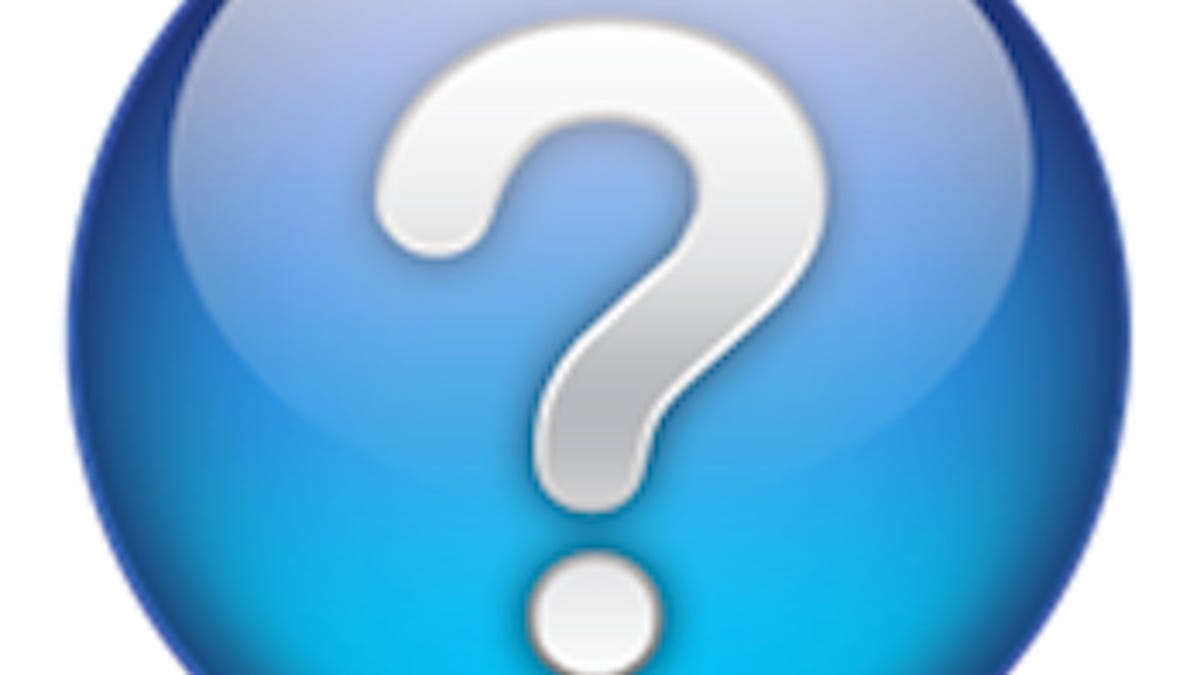Q&A: MacFixIt Answers
MacFixIt Answers is a weekly feature in which we answer questions e-mailed by our readers. We welcome alternative approaches and views from readers and encourage you to post your own suggestions in the comments.

MacFixIt Answers is a feature in which we answer questions e-mailed by our readers.
This week people wrote in with questions on proper battery usage habits, PowerPC applications showing up when checking for compatibility with Lion, cloning hard-drive upgrades, and transferring files from Windows to Lion systems. We continually answer e-mail questions, and though we present answers here, we welcome alternative approaches and views from readers and encourage you to post your suggestions in the comments.
Question: Proper battery usage habits
MacFixIt reader Alice asks:
Answer:
It is good to regularly use your battery and not always keep it in a fully charged or discharged state. If you rarely use your battery, then it is good to periodically calibrate it (every month or two).
Question: PowerPC applications showing up when checking for Lion compatibility
MacFixIt reader Lee asks:
Answer:
These applications were likely distributed with Office 2004 or 2008. If you had those on your system at some point, then they would have installed the PowerPC-based tools. Office 2011 and all of its required components are Intel-only, so you should have no problem running it in Lion. I use Office 2011 regularly on Lion.
Question: Cloning hard drives for upgrading
MacFixIt reader Richard asks:
I have a BootCamp partition running 64-bit Windows 7, and an OS X partition running 10.7.1 (Lion). From what I have read, Winclone is no longer a viable option in this configuration, and I am at a loss as to how I can accomplish what I was hoping to be a relatively straightforward process.
I already have a 750 GB drive on hand to replace a 250 GB drive currently installed, as well as an external chassis to mount the "spare" drive while I am doing the upgrading.
Answer:
Without Winclone you would need a cloning utility that can do a device-level block clone of the drive to exactly mirror its entire partition structure and data layout from one drive to the next. In theory, this should make the secondary drive be identical to the first and preserve both the OS X installation and the Windows partition, but I have not done this type of transfer myself and am not sure what tools would best do this. Some block-level cloning tools do not properly manage full partition tables and only preserve the data layout of a volume (for data recovery purposes).
Two potentially useful programs are Stellar Drive Clone and Clone X, both of which have free trial periods.
Because block-level cloning needs full access to all aspects of the drive, you will likely need to install OS X to a secondary drive (an external FireWire or USB drive, or even a USB flash drive that's large enough) and then install the cloning utility to this drive. Then use the utility to access your main boot drive and clone it to the destination drive.
(Richard asked about block-level cloning resulting in volumes of the same size, and while this is true you can use Disk Utility to expand the disk's partitions to take advantage of available space.)
Question: Transferring files from Windows 7 to a Lion Mac
MacFixIt reader Stephen asks:
However, I have not been able to go the other direction, from the PC to my iMac, which is what my wife would like to be able to do. Maybe that's an unfair question to ask you since your focus is the Mac. I'm still not sure, but the problem seems to be that her office computer is part of a network domain, which does not allow her to get on our little peer-to-peer network here at home. If you have an opinion about that or know some way to get around it, I would be grateful.
Answer:
There may be some group policies on the domain that prevent access to certain systems. OS X does have a new windows networking service in Lion that will likely have a few initial bugs, but at its basics it should work. One option you can use is to enable "Remote Login" on the Mac in the Sharing system preferences, and then use an FTP client to connect to the Mac's IP address using the SFTP protocol. When you enable this service you can add a new "Sharing only" account to the list of users, so you don't have to create a new full account on the system for people to connect with (a sharing-only user can be created in the Users & Groups system preferences). This is a secure method of transferring files, but is not auto-configurable or auto-discoverable like Microsoft or Apple's networking protocols.
Questions? Comments? Have a fix? Post them below or e-mail us!
Be sure to check us out on Twitter and the CNET Mac forums.

